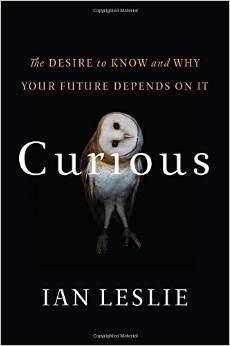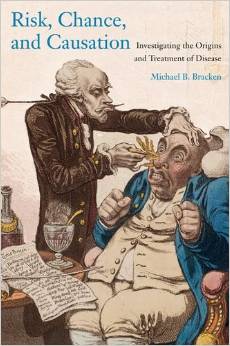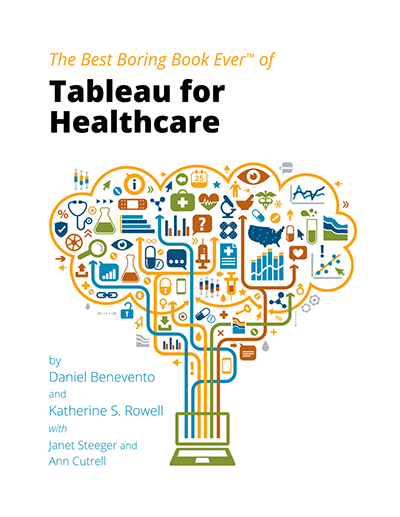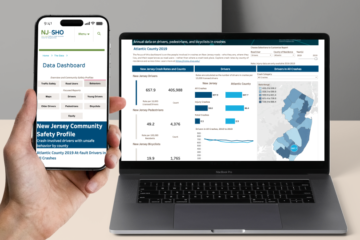It’s that time of year again: sun, sand, surf, and books to feed your inner healthcare data geek. The titles on this year’s list are a varied lot, but all have helped improve my work in visualizing healthcare data. I hope they’ll do the same for you.
Curious: The Desire to Know and Why Your Future Depends On It
by Ian Leslie
My friend, colleague, and mentor Steve Few recommended this book to me, and I’m glad he did, because although I consider myself a naturally curious person, the research, inspiring stories, and case studies in Ian Leslie’s book caused me think more deeply about how hard it is, in our information- and technology-saturated world, to become and stay truly curious.
Leslie explains that there are two major categories of curiosity. The first, “diversive curiosity,” is an attraction to everything novel, superficial, and easily known — the kind of curiosity that is little more than a temporary fix for boredom. (Web search for piano-playing cats, anyone?)
The second category, and the main focus of this book, is “epistemic curiosity,” the desire to understand a subject from top to bottom — to gain deep knowledge of the type that may lead to profound discovery or a lifetime’s study. Not only is epistemic curiosity the main subject of his book; it’s also, as Leslie says and his research supports, the form most under siege by technology.
Epistemic curiosity depends on friction, on uncertainty, on being aware of our own ignorance — the very opposite of the quick-fix omniscience of a search-engine quest. People who are epistemically curious see life as a mystery to be patiently and tenaciously explored, rather than mastered with a how-to checklist. These folks invest in acquiring the mental tools with which to tackle difficult problems. They make the effort to learn knotty, complicated things, and ponder new ideas and concepts. They are always asking “why” as well as “what” questions. They use technology as a tool to further learning and deepen their understanding, rather than as a quick way to answer a question or as a crutch, which compromise would keep them from doing the hard mental exercise required to keep their “curiosity muscle” strong.
Why I like it: Leslie makes a convincing case that we need to work harder for our knowledge and stop being as shallow as our technology allows us to be. A great first step toward that goal is to challenge yourself to read this book and to think more deeply about the importance of staying wildly curious.
Letting Go of the Words – Writing Web Content That Works
by Janice (Ginny) Redish
“I don’t write web content, so why should I care about this book?” you may be saying to yourself. Well, because with the advent of online, interactive business intelligence software that allows the viewers of reports and dashboards to interactively view and explore data, many of the same principles described in Redish’s book are absolutely relevant to the work we do.
For example, Redish counsels that writing for the web is about figuring out what your readers want, then giving it to them. This means that you build your site around what they need to know — not what you need to tell them. If this sounds familiar, you might like to take another look at my 3 May 2013 newsletter, Peace, Love, Joy, and Personas. In it, I remind my subscribers that we should all steer away from self-referential thinking, and I offer a lesson in the use of personas to move from a provider-centered to a user-centered set of coordinates.
I particularly love the way that Redish describes techniques for making every word count, and her use of Before and After examples to demonstrate how to be pithy without being cryptic. This is something we urge our clients to do with labels and explanations on reports and dashboards: edit; edit again; edit some more. The author does a tremendous job of showing how — and her book is a testament to “practice what you preach”: clear, concise, easy to understand.
Why I like it: the principles in this book are directly, immediately, and effectively applicable to the work we do visualizing healthcare data. Highly recommended.
About Face: The Essentials of Interaction Design, 4th ed.,
by Alan Cooper and Robert Reimann
Ever since I read The Inmates Are Running the Asylum: Why High Tech Products Drive Us Crazy and How to Restore the Sanity and attended one of his design workshops at Cooper U, I have been a fan of Alan Cooper’s take- no-prisoners, manifesto style of communicating the enormous importance of understanding and mastering the principles of interactive design to create what he calls a “truly delightful user experience.”
Cooper and his co-authors have organized the information in this 4th edition clearly and logically: the chapters flow the same way that interactive design projects — at their best — progress and develop over time. Cooper had me at “hello”, from chapter one, wherein the authors offer a detailed definition of human-oriented design activities:
- Understanding the desires, needs, motivations, and context of the people using the products
- Understanding business, technical, and domain opportunities, requirements, and constraints
- Building on this knowledge to create products whose form, content, and performance are useful, useable, desirable, economically viable, and technically feasible
I also really like the design-principle call-outs displayed throughout the book — especially the one on page 180, which reminds the reader that “Software should behave like a considerate human being.” Amen.
Why I like it: if you are serious about a career in data visualization and the creation of really great interactive reports and dashboards that will delight your users, this book is a must-have.
This little gem of a book was selected as a 2013 Choice Outstanding Academic Title in the Health Sciences Category, and received an Honorable Mention from the 2013 American Publishers Awards for Professional and Scholarly Excellence (PROSE), in the Economics category. Both were well-deserved accolades for an easy-to-read and important book in which the author, a clinical epidemiologist, shows with anecdotal material and in plain language how evidence-based medicine can help all of us understand and assess news about health risks, treatment “breakthroughs,” and “cures.”
I’m sure that you often feel, as I do, bombarded by reports and news stories about dangerous chemicals in the environment, miracle cures, the safety of therapeutic treatments, and potential cancer-causing agents, among many other anxiety-producing topics. But what exactly is meant by “increased risk”? Should we worry if we are discovered to be at “twice the risk” for developing a particular illness or condition? And how do we interpret “reduced risk” to properly assess the benefits of noisily advertised dietary supplements? Demonstrating the difficulty of separating the hype from the hypothesis, Bracken clearly communicates how clinical epidemiology works. Using everyday terms, he describes the professional scientific approach to questions of disease causation and therapeutic efficacy, and gives readers tools to help them understand whether warnings of environmental risk are warranted, or claims of therapeutic benefit justified.
Why I like it: The work we do every single day is predicated on the information Bracken so skillfully makes understandable to his readers. Having a better grasp on it all can only help as we are increasingly required to communicate it clearly and compellingly to all stakeholders.
Now, you didn’t seriously think that I would issue a “2015 Summer Reading List for the Healthcare Data Geek” and not include my own books, did you?
As you have probably guessed from the title, this book is not a page-turner; there are no life-changing secrets inside. Rather, it is a solid resource for both seasoned healthcare professionals and newcomers to the industry. The Best Boring Book is filled with well-organized, concise but thorough descriptions of selected clinical classification systems and healthcare databases. Each entry on a named system or database begins with a general description of its current state, followed by a timeline of key points in its development. A summary section describes present structure and terminology.
This arrangement helps the reader understand the antecedents and evolution of these systems and databases, and thereby be guided to choose exactly the right one of all of them for a particular project. Which systems and databases align best with the questions you hope to answer, the information you wish to impart? The information presented here should make those decisions and selections faster, easier, smoother, and more confident.
Yes, I know: you’re not going to read this one on the beach…but after a sweet summer vacation, you will most assuredly want it waiting for you back at the office as you prepare to dig in to all the lovely healthcare data that you’ll need to analyze.
The Best Boring Book Ever of Tableau for Healthcare is the first and only work of its kind. Designed specifically for healthcare professionals by the healthcare, data-visualization, and report-design experts at HealthDataViz, this book introduces and details Tableau Desktop’s outstanding data-analysis and dashboard-creation features. The first half of the book is designed so that any chapter the reader chooses enables creation of a chart and dashboard from start to finish.
Each chapter includes:
- Discussion of a particular chart type and its use(s)
- Explanation of source and meaning of example data
- Logical, easy to follow, step-by-step instructions for building a chart
- Detailed screen shots of each step with call-outs on tips, tricks, and best practices
- Crucial insight into the core narrative of each finished chart
- Concise, handy HDVizoom™ quick-reference presentation of each chapter’s complete instructions
The book’s second half addresses intermediate to advanced topics: data source manipulation, parameters, calculated fields, forecasting, the final chapter offer effective models to guide and inspire readers as they create their own.
Bonus resource! The data used for each example in this book is available for download at HealthDataViz.com, allowing users to enjoy a full immersive learning experience with real, current healthcare data.
I’ve written here about just a few of the titles I think you’ll find worth toting to the beach or lakeside this summer-or at least adding to your reference library. As for me? Well, I haven’t quite decided, but I’m guessing the selections will cement my status as a full-fledged healthcare-data geek. After all, I wouldn’t want to ruin my hard-earned reputation!









0 Comments